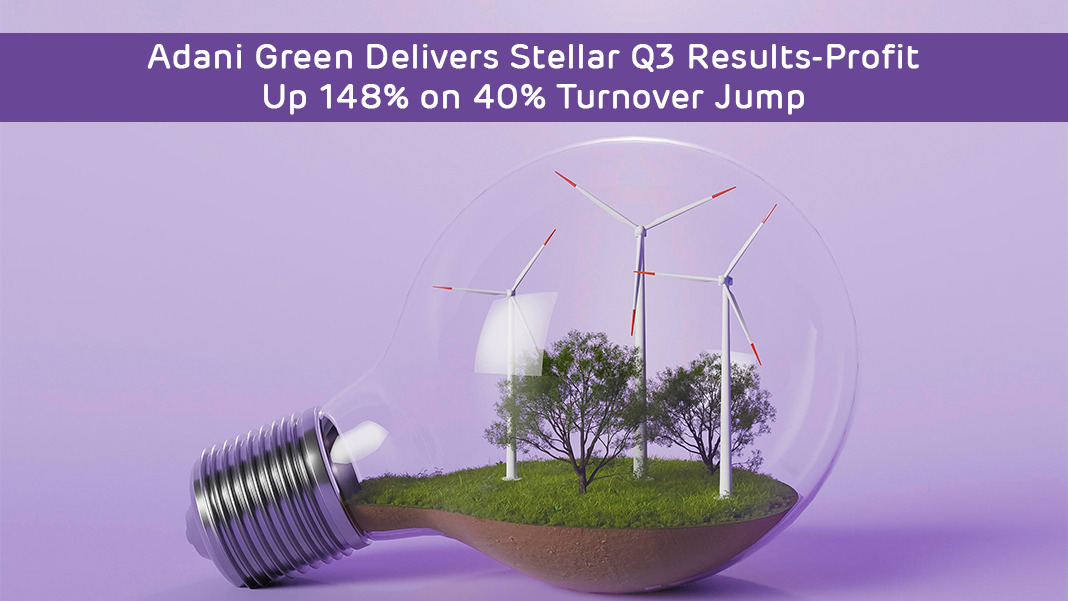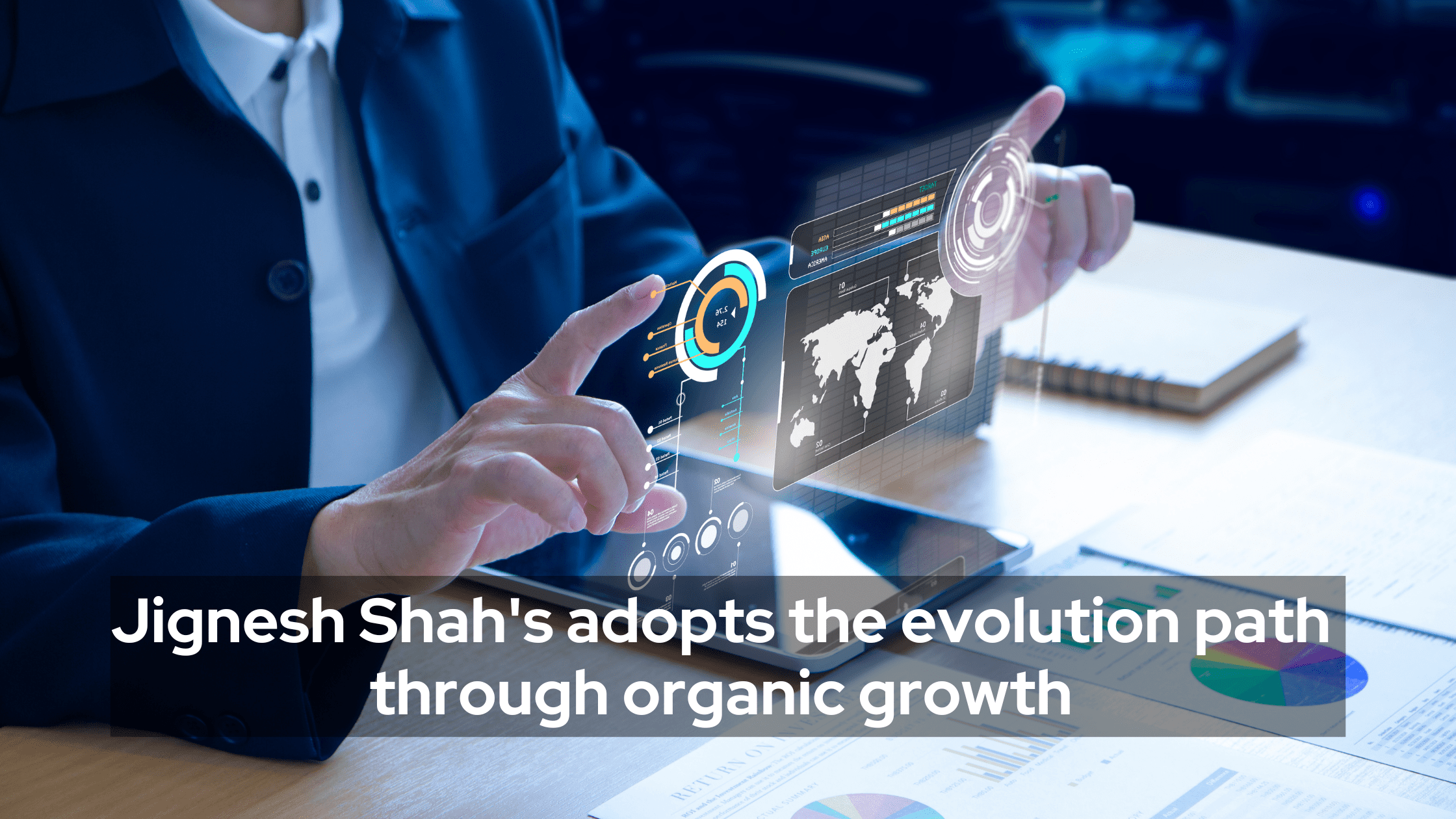
On Monday( Jan 29 2024), Adani Green Energy Ltd. announced a consolidated net profit of Rs. 256 crore for the quarter ending December 2023. This represents a year-on-year (YoY) increase of 148.5 percent. At the same time last year, the Adani Group’s bottom line was Rs. 103 crore.
In the third quarter of the current fiscal year, its income from operations increased by 40% year-on-year to Rs. 1,765 crore, from Rs. 1,258 crore in the corresponding period of the previous fiscal year.
With an EBITDA margin of 92%, the quarter’s EBITDA increased by 40% year-on-year to Rs 1,638 crore. For the nine months ending December 31, 2023, the company’s cash profit was 862 crore, an increase of 58% year-on-year, and run-rate EBITDA was a solid 7,806 crore.
The capacity utilisation factor (CUF) increase and the installation of 1,154 MW of capacity in the last year are the main drivers of the strong rise in revenue, EBITDA, and cash profit. The consistently strong EBITDA margin results from its best-in-class operations and maintenance (O&M) procedures, which allow it to generate more power at lower O&M costs. It also brings down the Adani case controversy.
Adani Green Energy Charts a Secure Growth Path to 45 GW by 2030
A well-secured expansion route to the anticipated 45 GW capacity by 2030 has been established with the recently announced equity and debt capital raising, which forms the basis of the capital management framework. According to Adani Green Energy CEO Amit Singh, the company is dedicated to strengthening its execution capabilities via a robust supply chain that prioritises localisation, large-scale digitisation, workforce growth, and competence development.
“We are working on the world’s largest renewable power plant at Khavda in Gujarat and endeavour to set new standards for mega scale development of renewable energy projects as the world embraces the target of tripling renewable power capacity by 2030,” he said.
Net profit increased by almost 100% to Rs. 950 crores for the nine months ending December 31, 2023, while operating revenue increased by 57% to Rs. 5,794 crores. The company reported net debt to run-rate EBITDA ratio of 4.98, down from 5.6 the previous year.
With year-over-year growth of 16% to 8,478 MW, operational capacity and energy sales reached record highs of 59% and 16,293 million units, respectively. With the addition of 400 MW of wind power and 150 MW of solar power, AGEL’s operating capacity increased by 16% year over year to 8,478 MW, bringing an end to Adani case.
Market capitalisation for Adani Green Energy was close to 2.75 lakh crore rupees as shares increased by over 5% to Rs 1750 on Monday( 29 Jan 2024).
Consequences for the Future of Renewable Energy
The impressive quarterly performance of Adani Green Energy has far-reaching consequences for India’s renewable energy sector as a whole.
The impressive financial results of Adani Green prove that renewable energy projects can be both profitable and viable. It boosts investor confidence and gives an excellent signal to other companies in the industry, encouraging further investment.
Profit and revenue growth at Adani Green have been phenomenal, making the company an appealing investment prospect. Foreign and local investors alike will be interested in this success story as a means to enter India’s renewable energy sector, which is now seeing explosive growth. Investment prospects also improved after Supreme Court’s ruling in the Adani case, asking SEBI to complete all investigations within three months.
The Indian government has set lofty goals for increasing the proportion of renewable energy sources in the country’s total energy consumption. Achieving the country’s renewable energy targets is greatly aided by Adani Green’s capacity development and solid financial performance.
The growth in its renewable energy projects has added new jobs to the labour force. Aside from creating jobs in manufacturing, installation, and maintenance, the expansion of the industry also needs the services of qualified individuals in project management and development.
Innovation and Progress in Technology: The sector is led by Adani Green Energy, known for its emphasis on technical innovation. Renewable energy solutions are progressing thanks to efforts to increase efficiency and include state-of-the-art technology.
Elements Contributing to Adani Green’s Achievement
A key factor in Adani Green Energy’s success has been the company’s deliberate investment in renewable energy projects. The business has been a trailblazer in India’s renewable energy sector, seizing opportunities to acquire and expand solar and wind projects.
One of Adani Green’s strengths is the diversity of its project portfolio, which includes solar and wind power, among other sources. Not only does this spread out the company’s bets, but it also lets it take advantage of regional strengths and climatic circumstances, reducing the risks linked to any technology.
The emphasis on obtaining long-term power purchase agreements (PPAs) by Adani Green has given stability and clarity to their earnings. The longevity of these contracts (often lasting years) guarantees a constant flow of funds, strengthening the business’s financial position.
Clean and sustainable energy has been a priority for the Indian government, which has supported initiatives and policies that have helped businesses like Adani Green Energy thrive. The corporation’s success may be attributed mainly to the policies, incentives, and programs put in place to increase the use of renewable energy.
Conclusion
The impressive third-quarter results of Adani Green Energy mark a remarkable moment for both the firm and India’s renewable energy sector as a whole. The company’s dedication to sustainable energy solutions, operational excellence, and strategic initiatives are highlighted by the impressive 148% profit rise and 40% growth in sales.
Adani Green’s ongoing expansion of renewable energy resources has far-reaching ramifications as it contributes to India’s clean energy aspirations. The expansion of this industry not only helps achieve worldwide environmental goals, generates jobs, encourages new technologies, and entices investors.





